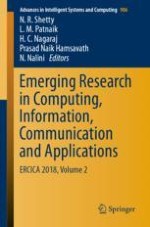2019 | OriginalPaper | Buchkapitel
Performance Analysis of Vedic Multiplier with Different Square Root BK Adders
verfasst von : Ranjith B. Gowda, R. M. Banakar, Basavaprasad
Erschienen in: Emerging Research in Computing, Information, Communication and Applications
Verlag: Springer Singapore
Aktivieren Sie unsere intelligente Suche, um passende Fachinhalte oder Patente zu finden.
Wählen Sie Textabschnitte aus um mit Künstlicher Intelligenz passenden Patente zu finden. powered by
Markieren Sie Textabschnitte, um KI-gestützt weitere passende Inhalte zu finden. powered by
